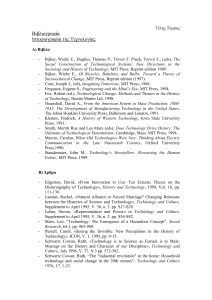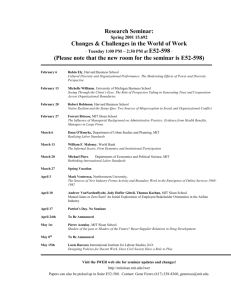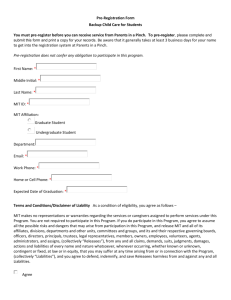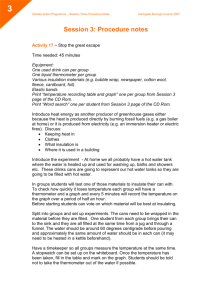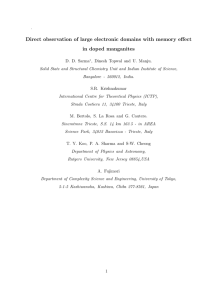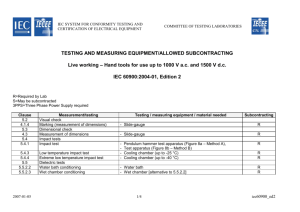is-11 magnetic resonance and susceptibility characterization of
advertisement
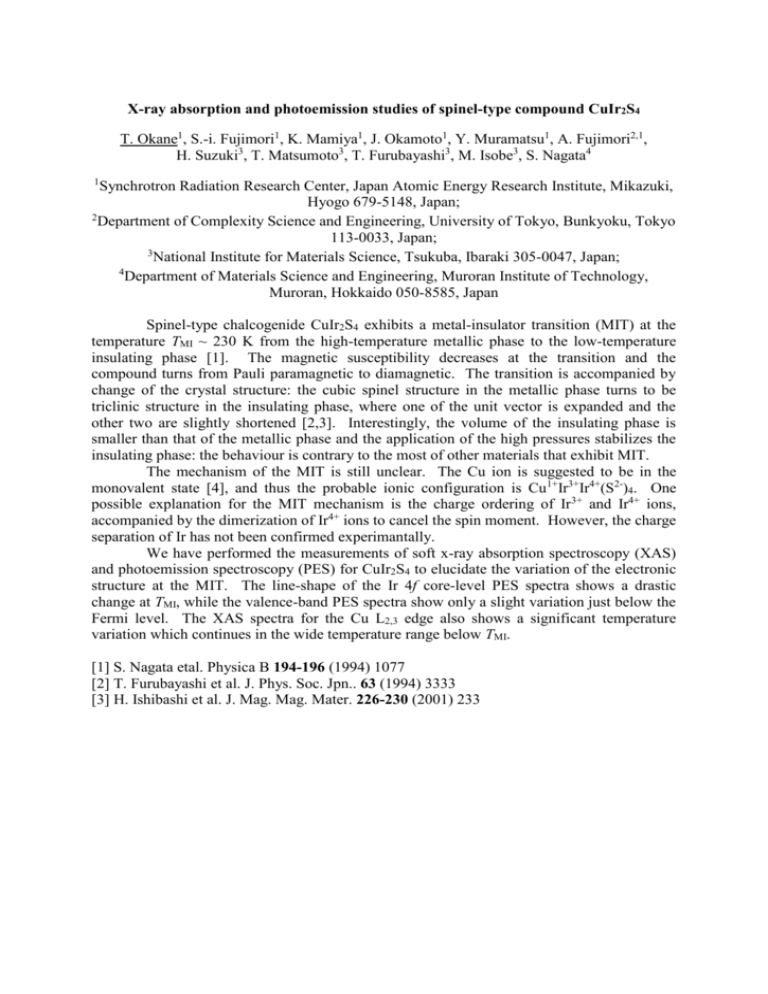
X-ray absorption and photoemission studies of spinel-type compound CuIr2S4 T. Okane1, S.-i. Fujimori1, K. Mamiya1, J. Okamoto1, Y. Muramatsu1, A. Fujimori2,1, H. Suzuki3, T. Matsumoto3, T. Furubayashi3, M. Isobe3, S. Nagata4 1 Synchrotron Radiation Research Center, Japan Atomic Energy Research Institute, Mikazuki, Hyogo 679-5148, Japan; 2 Department of Complexity Science and Engineering, University of Tokyo, Bunkyoku, Tokyo 113-0033, Japan; 3 National Institute for Materials Science, Tsukuba, Ibaraki 305-0047, Japan; 4 Department of Materials Science and Engineering, Muroran Institute of Technology, Muroran, Hokkaido 050-8585, Japan Spinel-type chalcogenide CuIr2S4 exhibits a metal-insulator transition (MIT) at the temperature TMI ~ 230 K from the high-temperature metallic phase to the low-temperature insulating phase [1]. The magnetic susceptibility decreases at the transition and the compound turns from Pauli paramagnetic to diamagnetic. The transition is accompanied by change of the crystal structure: the cubic spinel structure in the metallic phase turns to be triclinic structure in the insulating phase, where one of the unit vector is expanded and the other two are slightly shortened [2,3]. Interestingly, the volume of the insulating phase is smaller than that of the metallic phase and the application of the high pressures stabilizes the insulating phase: the behaviour is contrary to the most of other materials that exhibit MIT. The mechanism of the MIT is still unclear. The Cu ion is suggested to be in the monovalent state [4], and thus the probable ionic configuration is Cu1+Ir3+Ir4+(S2-)4. One possible explanation for the MIT mechanism is the charge ordering of Ir3+ and Ir4+ ions, accompanied by the dimerization of Ir4+ ions to cancel the spin moment. However, the charge separation of Ir has not been confirmed experimantally. We have performed the measurements of soft x-ray absorption spectroscopy (XAS) and photoemission spectroscopy (PES) for CuIr2S4 to elucidate the variation of the electronic structure at the MIT. The line-shape of the Ir 4f core-level PES spectra shows a drastic change at TMI, while the valence-band PES spectra show only a slight variation just below the Fermi level. The XAS spectra for the Cu L2,3 edge also shows a significant temperature variation which continues in the wide temperature range below TMI. [1] S. Nagata etal. Physica B 194-196 (1994) 1077 [2] T. Furubayashi et al. J. Phys. Soc. Jpn.. 63 (1994) 3333 [3] H. Ishibashi et al. J. Mag. Mag. Mater. 226-230 (2001) 233 [4] J. Matsuno et al. Phys. Rev. B 55 (1997) R15979




